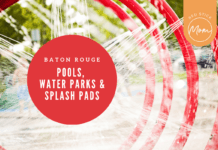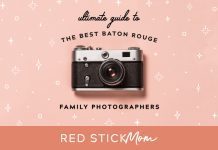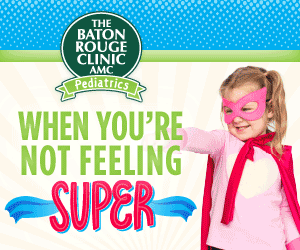It was about four years ago that I starting seeing news stories pop up about the questionable ingredients, as well as inadequate effectiveness of many sunscreens on the market. I listened with one ear, but when they started talking ingredients like oxybenzone (whatever that is), I admit I glazed over. After all, I used high-quality brands like Neutrogena, recommended by dermatologists! Neutrogena couldn’t possibly sell anything unsafe, I told myself. Wrongo.
It wasn’t until my daughter was born in 2013 and summer hit a few months later that I started doing more research into what is really in the sunscreens we slather on our bodies often on a daily basis, especially in the summer. As an avid daily sunscreen wearer (and outspoken advocate of its use….insert eye-roll courtesy of my family), what I found was disheartening to say the least.
Not only did I discover that my beloved Neutrogena that I had been using for over a decade puts questionable, possibly even cancer-causing chemicals in their products, but that the particular line of sunscreen I had been using for my baby, Pure & Free, was not deemed safe because it “contains a preservative called methylisothiazolinone, or MI, that some researchers call a potent allergen and that is deemed unsafe in Europe (EWG, 2015).” Are you kidding me?! Not exactly my definition of “pure and free.” And Neutrogena is not the only culprit by any means. Many, many of the sunscreen brands we all use have very questionable ingredients in them.
I learned a great deal from the Environmental Working Group, “a non-profit, non-partisan organization dedicated to protecting human health and the environment” that has been around for over two decades. They have put out a sunscreen guide every year for nine years, and there is a ton of information, including best and worst sunscreens by brand.
Basically there are two types of sunscreens: chemical and mineral filters, each utilizing different mechanisms for protecting skin. Most sunscreen products out there use chemical filters, which typically include a combination of two to six active ingredients including oxybenzone, avobenzone, octisalate, octocrylene, homosalate and octinoxate. Mineral sunscreens contain zinc oxide (like what is used in many diaper rash creams – a blocker) and/or titanium dioxide.
My personal issue with chemical sunscreens is that they are absorbed into the skin, and these chemicals have some questionable toxicity levels and possible effects on our bodies and overall well being. For example, that news report I glazed over a few years ago that mentioned oxybenzone? That particular chemical has been known to act like estrogen and affect sperm production in animals, and it has been associated with endometriosis in older women. And most mainstream sunscreens contain this chemical. Awesome. I mean, think about how much of this and other chemicals like it we are exposed to our entire lives — most of us utilize sunscreen from infancy, on. We’re talking decades!
According to the EWG, mineral sunscreens are a safer option because: they provide sun protection posing few health concerns, they don’t break down in the sun, and zinc oxide in particular provides excellent protection from UVA rays.
It should go without saying that sunscreen isn’t the only precaution and never should be – we must use other forms of protection against the sun’s rays including:
- Wearing protective gear at all times, including hats and sunglasses, clothing – reducing your risk by 27%. This is essential.
- Going outdoors early or late in the day to avoid peak sun time, which is 10am to 4pm. If you go out during peak time, and we all do at some point or another, take extra care and use common sense.
- Seeking out the shade, especially when with infants. A fair-skinned baby does not yet have protective melanin proteins and needs to be kept out of the sun.

Additionally here are some hard and fast suggestions for things to avoid when choosing sunscreen for both you and your kids:
- Avoid sprays. I see people using these on kids all the time, and I get it. They’re easier to apply on a squirming little one. But by using a spray you risk inhaling those potentially toxic chemicals and harming their little lungs, not to mention it’s easy to miss areas on the body. What’s easiest isn’t always best. Go for the creams.
- Avoid sunscreens containing bug repellent. The two don’t mix, literally. One decreases the other, in some cases by 30%. Use two products, one for sun protection first, followed by an insect repellent. Win.
- Avoid SPF values above 50. The FDA is considering banning all 50+ products, but until then, the level of protection between for example, SPF 50 and SPF 100 is marginal at best. Perhaps most damaging is that studies have shown that people are misled by high SPF claims and improperly use them as a result. In other words, the products can coax users into a false sense of security, thus not reapplying when they should and/or staying in the sun for far too long.
- Avoid Retinyl palmitate. This is a form of Vitamin A, found in many night creams for an anti-aging effect. But when used on sun-exposed skin, it may speed the development of skin tumors and lesions, according to government studies. No definitive decision has been made, but I remember even years ago when I used Retinyl in my skin regimen, my dermatologist recommended that I avoid the sun when using it. I’m no doctor, but in my humble opinion it’s best not to have it in your sunscreen.
- Avoid Oxybenzone. I’ve mentioned this chemical several times in this article, so you’ve probably got it by now. It’s a hormone disruptor, possibly harmful on multiple levels. Why not avoid it if you can? And good news, you can.
Here are a few common sense actions you should absolutely NOT avoid:
- Apply sunscreen 30 minutes before exposure and re-apply sunscreen every two hours thereafter.
- Reapply immediately after getting wet, sweating or towel-drying. Ignore labels that state “water proof” or “sweat proof.” Such claims are impossible.
- Slather it on to the max! In this case, less is not more. Studies have shown that people typically apply only one-fourth to two-thirds of the amount required to achieve the product’s SPF rating. The American Academy of Dermatology recommends applying 1 oz — about a palm-full — evenly to all exposed skin.
One tool I’ve found useful is the EWG’s database, not only for sunscreen but a wide array of skin care products. Products are given a score (1-10) which reflects known and suspected hazardous ingredients in that particular product. There is also a handy smartphone app, which allows you to scan the barcode of almost any skin care product and get its ranking right then and there while out shopping or testing your products at home.
As you’ve probably guessed, after doing my research, I opted for the mineral sunscreens for my family. I threw out all of our chemical sunscreens (Coppertone, Banana Boat, and especially Neutrogena), and set out to find mineral options. You may be curious as to what I personally use, and I’m happy to share. I picked these based on the EWG database ranking and local availability.


Both brands can be found at Whole Foods, and I have found Badger at Bed, Bath and Beyond. Since I now know what I like, it’s often easier (and cheaper) to buy online, but it was important that I was able to find something that I could get locally if in a pinch. These are just a few of the many safe and effective options when it comes to mineral sunscreen.
Look, safety concerns surrounding sunscreen is a bit of controversial topic – more research is needed, there are differing opinions on each side, and politics are at play, as is so often the case, while the average American mom or dad is just trying to protect their family. I encourage you to do your own research and make an informed decision. No matter what you decide when it comes to the type of sunscreen you buy, make sure you are using some type of sunscreen, and several other actions, when it comes to sun protection for you and your family.
I know I’ve given you a lot to chew on, especially if you’re hearing this information for the first time. Honestly though, I’ve just scratched the surface here. On the off-hand chance this is the only article you read on sunscreen this summer, I’ll leave you with this list of absolute worst kids’ sunscreens for 2015, both in ability to protect and hazardous ingredients, according to the EWG, so you can at the very least avoid these products.
2015 Worst Sunscreen for Kids [as recommended by the Environmental Working Group]:
Banana Boat Clear UltraMist Kids Max Protect & Play Continuous Spray Sunscreen, SPF 110
Coppertone Kids Sunscreen Lotion, SPF 70
Coppertone Kids Sunscreen Stick, SPF 55
Coppertone Kids Wacky Foam Foaming Lotion Sunscreen, SPF 70+
Coppertone Water Babies Sunscreen Lotion, SPF 70+
Coppertone Water Babies Sunscreen Stick, SPF 55
Equate Kids Sunscreen Stick, SPF 55
Kroger Baby Sunscreen Lotion, SPF 70
Kroger Kids Sunscreen Lotion, SPF 70
Neutrogena Wet Skin Kids Beach & Pool Sunblock Spray, SPF 70+
Up & Up Kid’s Sunscreen Stick, SPF 55



















There is a Neutrogena product (baby, I think? In a pink bottle) that does use mineral sunscreen as the active ingredient, which may be a better choice, especially among drugstore choices! My dermatologist (and you touched a little on this) said that the chemical sunscreens break down in sun and heat – which is where you usually keep your sunscreen! beach, car, etc… – and therefore reduces the effectiveness, which is another win for mineral sunscreen! And for convenience sake, for the kid that doesn’t like lotion on their face, I’ve found the sticks easy to apply!
Thanks for your comment Jen! Yes, I forgot to mention in the post that the sticks are great and are available in mineral form! I keep one in my purse at all times, and it’s easy to rub all over the face quickly, both for myself and my toddler, especially if we’re somewhere you wouldn’t necessarily think to wear sunscreen….like an afternoon at the zoo or park when the sun is beating down on us. Thanks so much for mentioning it! 🙂
Dear Fleur: Loved this article. I’m switching to the Badger Brand. Glad you wrote it. Love you, Daddy.
Thanks Dad. Badger definitely isn’t the only safe choice, there are many good/safe mineral sunscreens, but I’ve been happy with their products.
One thing to add. Make sure to choose a sunscreen that has “broad spectrum” on the label. This means you’ll get UVA and UVB protection. Our natural sunscreens as well as the Badger products mentioned and I’d guess the Andalou product are broad spectrum but not all sunscreens are.
The FDA only allows sunscreens that are SPF 15 or higher and pass a UVB and UVA test to be labeled with “broad spectrum”
Thank you for the info!
I feed my kids orange veggies and leafy greens every day in the summer because it gives you a natural sunscreen! If we are going to be in the sun all day I will choose a natural sunscreen to put on them but I highly recommend sweet potatoes, carrots and squash! That way you give your body the vitamins it needs to protect your skin without blocking the vitamin D from the sun! Love this article! Thank you for this info!
Thanks for your comment and for reading, Rebekah!
[…] Some faves of mine that made the good list include Honest Company sunscreen and stick {plus, it’s from Jessica Alba…and people mistake me for her all the time} and Beautycounter Sunscreen. These are the two that I’ll be using this summer. I also religiously use Elta MD’s facial sunscreen which you can find on Amazon, but I normally purchase through my dermatologist who was the one who recommended to me! You can read more about sunscreen warnings and tips on our sister site Red Stick Moms Blog. […]
Thanks for your tips of picking the right sunscreen. I’ll be honest, I didn’t know that you should reapply the sunscreen every two hours after exposure. I wonder if it could be good to have a timer of some kind to remind you.